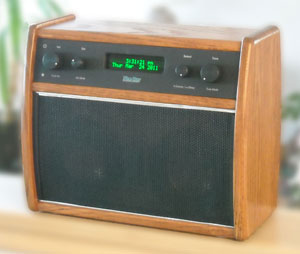
Lifelike Sound
Have you ever walked through airport or subway passageways with all the background noise, and suddenly heard 'live' music? How are we able to sense that it is live? After years of study, we still don't fully know all the characteristics of sound reproduction that would make it indistinguishable from 'live'.
Pine Bay is dedicated to setting new standards for lifelike sound, by both understanding how we hear, and then finding ways to provide more lifelike music.
There are many steps in sound reproduction, from first recording of a performance, through to the reproduced music that reaches your ears. Each of these stages changes the music to some degree, and it is the sum of these changes that detract from the sound being 'lifelike'. Here are some of the factors:
Distortion: At each stage of reproduction, the waveform coming out differs from the waveform going in - it is 'distorted'. Two types of distortion are harmonic, in which even a single tone's waveform is distorted, and intermodulation distortion, in which one tone causes distortion in other tones. Even if this distortion is small at each stage, it adds up in the end sound. Distortion can be pleasant or unpleasant, but it all renders the sound less lifelike.
Frequency Range/Frequency Response: To be more lifelike, the reproduction must cover the entire human audible frequency range, to ensure all harmonics of all musical sounds come through. Although our ears differ, this can range from below 50 Hz to almost 20 KHz (20,000) Hz. Tests show that the smoother the response over this entire band, the more lifelike the sound for most listeners, especially if the variation is less than +/- 5 db. (1 db is the smallest audible difference in amplitude).
Phase Response: The ear listens carefully for the 'attack' of new sounds, and uses this to distinguish between sounds. Reproducing 'attack' faithfully requires accurate phase response over the entire frequency range.
Soundstage: Music emanating from small speakers has a 'coming from a mouse-hole' sound. Speakers approximating the size of the original instruments provide a more lifelike sound. And performances sound more lifelike when the sound radiates in varied directions from the speakers, avoiding the 'sound coming out the front of a box' effect.
Additive Effects: Sound reproduction can suffer from additive effects such as rattling or other effects stemming from vibration. To reduce this, cabinets must be very solid and free of resonances and vibration noise.
There are many other possible causes of distortion, and achieving more-lifelike sound results from reducing all these. Pine Bay is dedicated to this cause.
